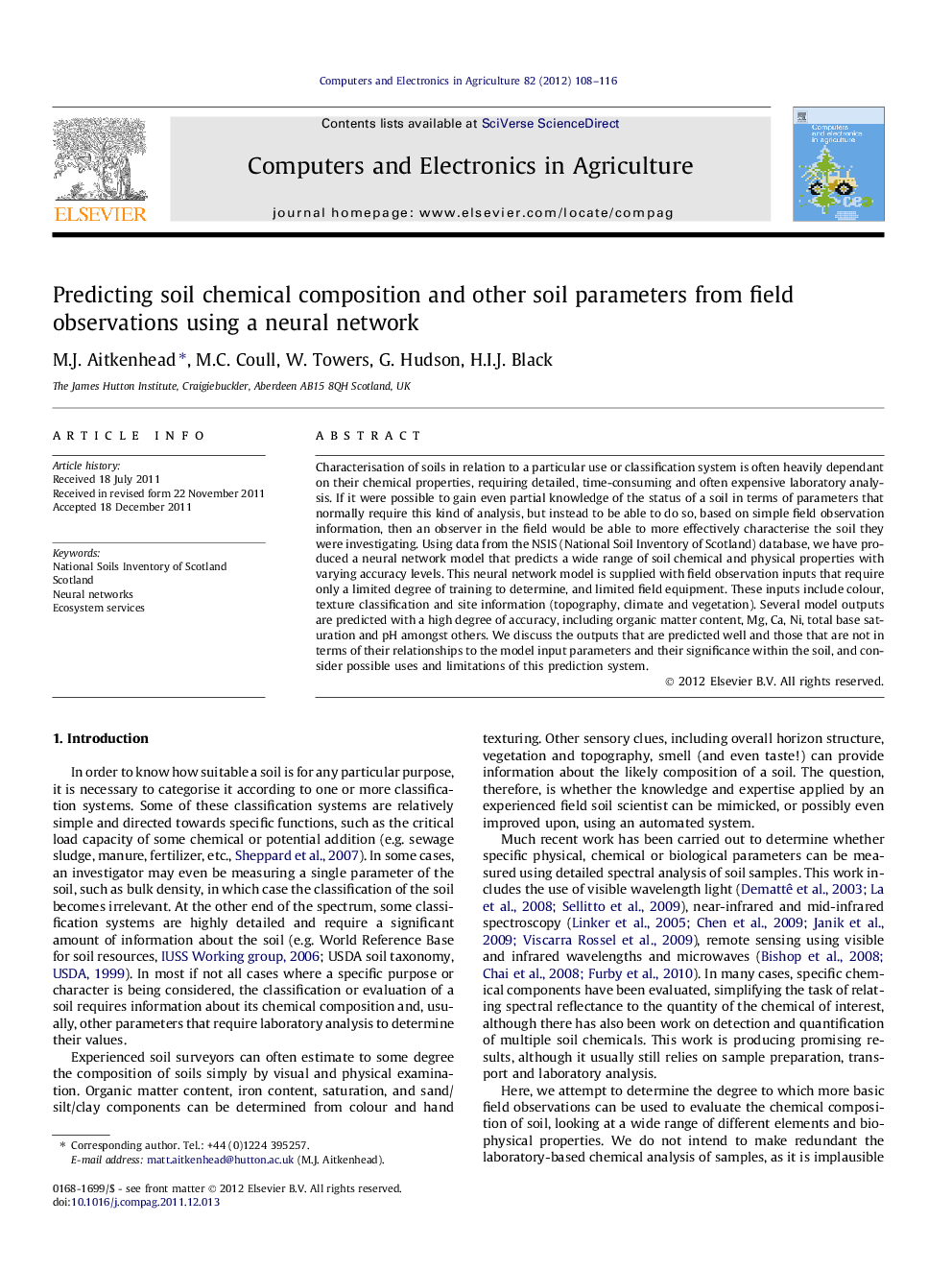| Article ID | Journal | Published Year | Pages | File Type |
|---|---|---|---|---|
| 84558 | Computers and Electronics in Agriculture | 2012 | 9 Pages |
Characterisation of soils in relation to a particular use or classification system is often heavily dependant on their chemical properties, requiring detailed, time-consuming and often expensive laboratory analysis. If it were possible to gain even partial knowledge of the status of a soil in terms of parameters that normally require this kind of analysis, but instead to be able to do so, based on simple field observation information, then an observer in the field would be able to more effectively characterise the soil they were investigating. Using data from the NSIS (National Soil Inventory of Scotland) database, we have produced a neural network model that predicts a wide range of soil chemical and physical properties with varying accuracy levels. This neural network model is supplied with field observation inputs that require only a limited degree of training to determine, and limited field equipment. These inputs include colour, texture classification and site information (topography, climate and vegetation). Several model outputs are predicted with a high degree of accuracy, including organic matter content, Mg, Ca, Ni, total base saturation and pH amongst others. We discuss the outputs that are predicted well and those that are not in terms of their relationships to the model input parameters and their significance within the soil, and consider possible uses and limitations of this prediction system.
► Data from the National Soil Inventory of Scotland was analysed with neural networks. ► Good prediction was made for a range of soil chemical and physical properties. ► This work could lead to characterisation of soil ecosystem services in the field.
